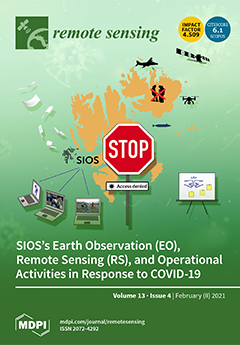Monitoring temporal dynamics of rangelands to detect and understand change in vegetation cover and composition provides a wealth of information to improve management and sustainability. Remote sensing allows the evaluation of both abrupt and gradual rangeland change at unprecedented spatial and temporal extents. Here, we describe the production of the National Land Cover Database (NLCD) Back in Time (BIT) dataset which quantified the percent cover of rangeland components (bare ground, herbaceous, annual herbaceous, litter, shrub, and sagebrush (
Artemisia spp. Nutt.) across the western United States using Landsat imagery from 1985 to 2018. We evaluate the relationships of component trends with climate drivers at an ecoregion scale, describe the nature of landscape change, and demonstrate several case studies related to changes in grazing management, prescribed burns, and vegetation treatments. Our results showed the net cover of shrub, sagebrush, and litter significantly (
p < 0.01) decreased, bare ground and herbaceous cover had no significant change, and annual herbaceous cover significantly (
p < 0.05) increased. Change was ubiquitous, with a mean of 92% of pixels with some change and 38% of pixels with significant change (
p < 0.10). However, most change was gradual, well over half of pixels have a range of less than 10%, and most change occurred outside of known disturbances. The BIT data facilitate a comprehensive assessment of rangeland condition, evaluation of past management actions, understanding of system variability, and opportunities for future planning.
Full article





